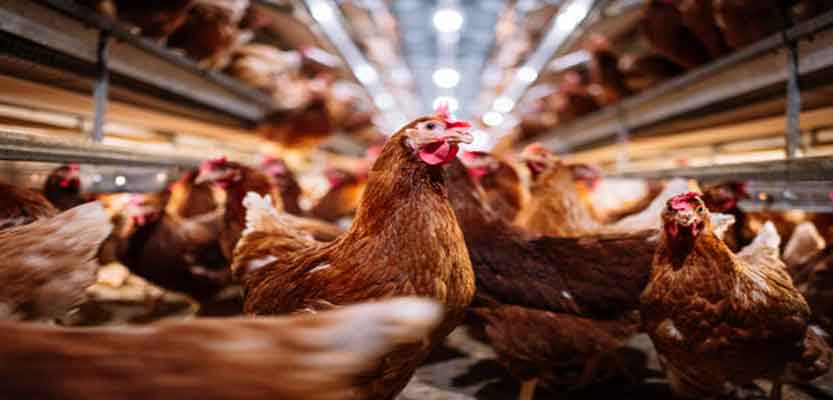
To gain a better understanding of how many chickens die annually, it is necessary to identify the various species. Almost all chickens are raised on farms, with four categories separating them.
Chicken Varieties Explained
There are initially broilers. For the poultry industry, broilers are raised in large sheds from birth until they are slaughtered after a few weeks and served shortly thereafter. There are both male and female broilers.
Then there are laying hens. Each hen selected as a layer produces approximately 300 eggs per year. By the end of the year, birds are typically exhausted in terms of egg production. Consequently, they are culled at this time. About half of all chicken births are male chicks, but they have little use in the egg-laying industry. When a male chick is born to a hen in an egg-laying facility, it is immediately killed. The carcasses can then be used as fertilizer or sold as pet food.
There are also breeders. These chickens can be either male or female, although the vast majority of breeders are female. These breeders are raised in order to produce more egg-laying and meat-eating chickens.
All four types of chicken are slaughtered after approximately one year.
How many chickens exist throughout the world?
Now that the various types of chicken have been established, we can delve deeper into the numbers. There are currently approximately 50 billion chickens alive on Earth. This population consists of breeders, layers, male chicks, and broilers. The vast majority of this population consists of broilers, with over 40 billion of them. Egg-layers account for approximately 6 billion, while male chicks in the same industry account for the same amount. Finally, tens of millions of breeders should be considered. It is estimated that there are approximately sixty million of these birds in the United States alone.
Broiler Production
Typically, chickens raised for their meat are confined in vast sheds with tens of thousands of other birds. Due to this overcrowding, it is not uncommon for diseases to infect the animal population of poultry farms like these. Often, supplements are fed to broilers to promote faster growth and larger meat yields, but this muscle growth is frequently out of sync with internal organ growth. As a result, broilers frequently succumb to organ failure and heart attacks. Some broilers become paralyzed because their legs cannot support their bodyweight for basic locomotion, so limb deformities are also fairly common.
Conditions for Laying Hens
Often, egg-laying chickens are crammed into cages with so many other birds that they can barely spread their wings. Those who can do so constitute a minority. Egg-laying hens are forced to urinate and defecate on one another due to the distressing conditions they are frequently subjected to. despite the fact that chickens have a natural propensity for cleanliness, these hens are forced to urinate and defecate on one another due to the distressing conditions they In such close proximity, these birds are also prone to irritability and frequently peck each other. To prevent injury, poultry farmers typically remove portions of the beak. When egg production declines, birds are transported to slaughter. However, because the bodies of these birds are typically depleted and the meat is of poor quality, their remains are used in basic foods such as soup or processed into pet food.
Statistics on Chicken Meat Production
The United States is the world’s largest producer of chicken meat, accounting for roughly one-fifth of all meat produced. China lags behind the United States, with Brazil following closely behind in third place. Other significant centres for chicken meat production include Russia, Mexico, India, Iran, Turkey, and Argentina, although their output is nowhere near that of the top three.
The United Kingdom, Spain, Poland, and France produce the most chicken meat in Europe, while Germany, Italy, and the Netherlands produce slightly less. Each year, approximately 90 million tons of chicken meat are produced worldwide. The United States and Brazil are the largest exporters of poultry in the world, while Hong Kong and China are the largest importers of chicken meat.
Industrial Farming
Perhaps most worrisome is the fact that an estimated 70 percent of all chicken meat produced in the world comes from industrial farming systems. This aspect of the chicken industry is accountable for the overcrowding of birds raised for their meat or egg production, as well as their untimely death and unnecessary suffering.
In contrast to other animals, chickens and birds are not protected by the Humane Slaughter Act, and no legal protection is afforded to the livestock we continue to consume in the greatest quantities.
